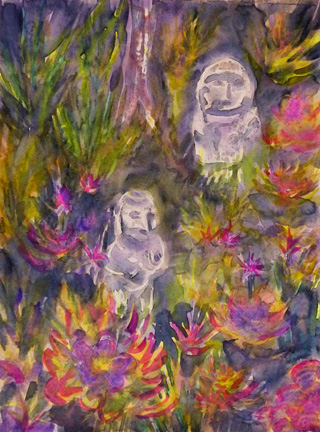Saskatchewan Crossing
Watercolour and Photoshop™
©2016 Charlene Brown
Saskatchewan Crossing is the tenth picture I’ve produced for my ‘clean energy’ haiku project using computer-stylized versions of Canadian landscape paintings. I plan to expand this Haiku+Haiga series into a compilation of up to 50 poems. And I may even try to explain some of the non-sequiturs in the poems!
Haiku: a poem of seventeen syllables, in three lines of five, seven and five syllables, traditionally evoking images of the natural world
Haiku: a poem of seventeen syllables, in three lines of five, seven and five syllables, traditionally evoking images of the natural world
Found clean energy haiku: five or seven syllable phrases
found in environmental research publications or newspaper articles on climate
change.
Haiga: a style of painting that incorporates the clean,
minimalist, yet often profound, aesthetic of haiku.


































